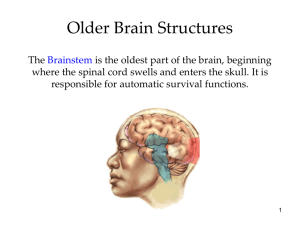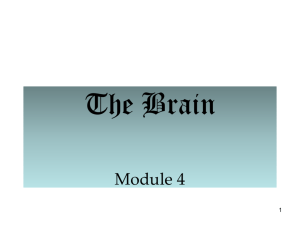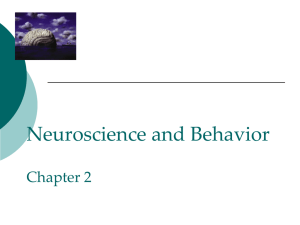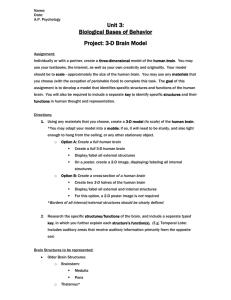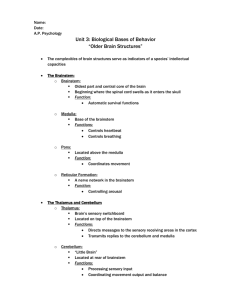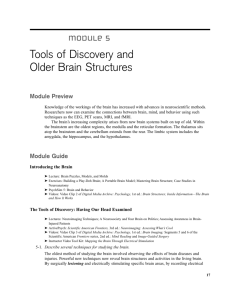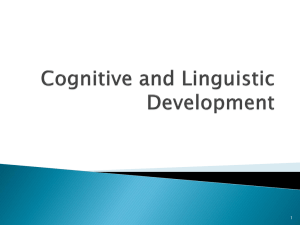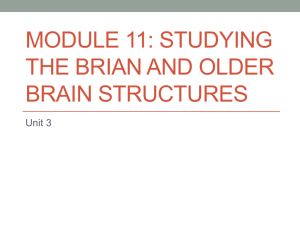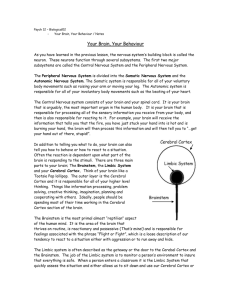TeenBrainStaff = Nathans presentation
advertisement
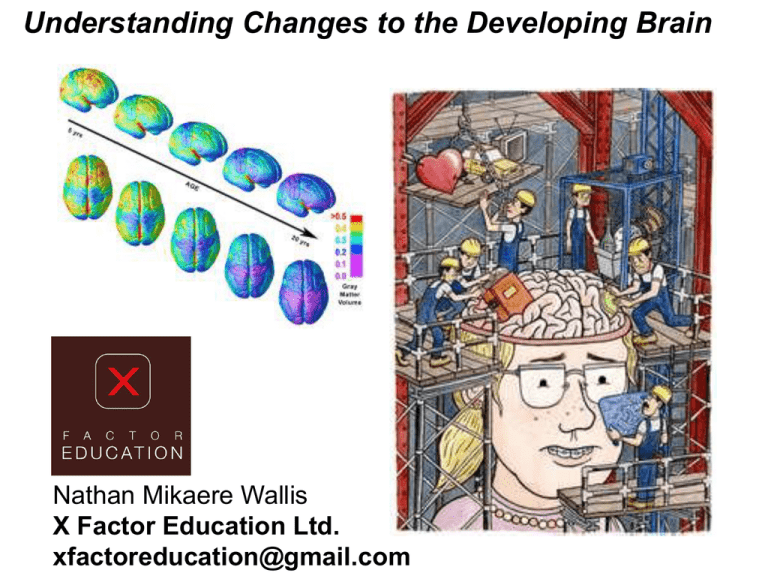
Understanding Changes to the Developing Brain Nathan Mikaere Wallis X Factor Education Ltd. xfactoreducation@gmail.com 1990’s The Decade of the Brain * Transcription genes/epigenetics. * growth of cortex relationshipdependant * first three years the most important Cozolino, Louis (2006) The neuroscience of human relationships: Attachment and the developing social brain. New York, NY, US: W W Norton & Co. Perry’s Neurosequential Model Empathy Controlling yourself Literacy Emotional response Coordination Movement Heart rate Fight,flight,freeze Perry, B.D. (2002). Brain Structure and Function I: Basics of Organisation. Adapted in part from “Maltreated Children: Experience, Brain Development and the Next Generation (W.W. Norton & Company). As one increases, the other declines – and vice versa High Activity Cortex brainstem Low Activity To really be using your cortex, your brainstem needs to be calm Effects of Trauma, abuse and neglect on the developing brain Image from Raine, A. (2009). Murderous Minds: Can we see the mark of Cain? Accessed from http://www.dana.org/news/cerebrum/detail.aspx?id+3066 On 30/1/2011. BRAIN CHILD NEEDS Adapted from: McCaleb, M. & Mikaere-Wallis, N. Relationship-shaping: Teacher consistency and implications for brain development. The First Years/Ngā Tau Tuatahi: New Zealand Infant and Toddler Education, 7(2), 21-25 exercise Other Major Changes • Melatonin (Sleep!) • Facial expression • Risk taking • Peer Influence Memory and Alcohol Image from Susan Tapert PhD. University of California, San Diego. • Work with the parietal lobe Responding to Challenging Behaviour Cortex stress ____________________________ Limbic __________ Mid brain ______ brainstem 3. Cognitive Training. Cognitive training 2. Validation. Emotional validation 1. Safety. Ensure well being and help to calm Survival/reptilian behaviours attachment Pro social behaviours Responding to Challenging Behaviour Cortex stress ____________________________ Limbic __________ Mid brain ______ brainstem 1. 4. Cognitive Training. Cognitive training 3. Validation. Emotional validation 2. Rhythm Touch. Ensure well being and help to calm Survival/reptilian behaviours attachment Pro social behaviours Pinel, J.P.J. (2000). Biopsychology (4th ed.) Boston: Allyn & Bacon. p. 57. If we imagine the brain as a garden.... Endorphins = Fertilizer Cortisol = weed killer At birth At 6 years 14 years
